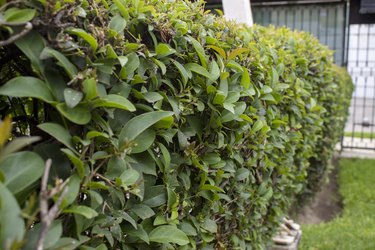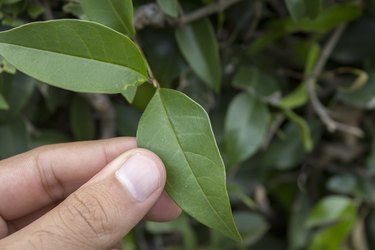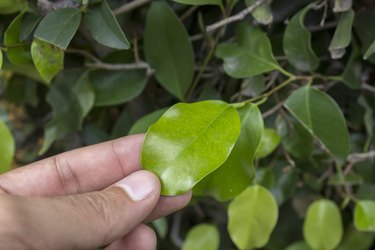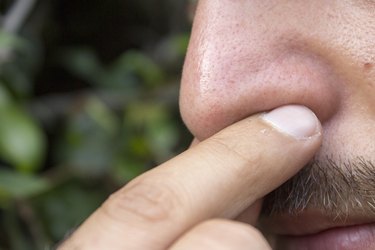
Evergreen foliage, fragrant sprays of virginal flowers, masses of berries -- a lot to like in trees of the genus Ligustrum, commonly called privet. Privet trees are commonly grown as stand-alones or lined up in a flowering hedge. Tough and tolerant, privets require little TLC from a gardener other than regular trims to control size.
Japanese Privet
Video of the Day

All privets are native to Japan and eastern Asia, but only one species bears the name of its origins: Japanese privet (Lingustrum japonica), a small tree or large shrub that generally doesn't rise over 12 feet tall. The pear-shaped leaves decorate the tree all year, but the white flowers (with their vaguely unpleasant fragrance) arrive in spring and are replaced by green berries that transform into black berries as winter arrives. Birds rely on the berries as a winter food source, but this only contributes to the plant's tendency to invade wild areas.
Video of the Day
Care of Japanese Privet

No care is good care for this privet and for most privets. The Japanese privet thrives when planted in sun or shade, and in almost any soil, wet or dry, in U.S. Department of Agriculture plant hardiness zones 8 through 10. Give the trees elbow room. Plant hedge specimens 5 feet apart or they squeeze each other out. Prune these trees back in early spring, or after flowering, to the height and width you see fit; they grow back fast. Sanitize the pruning tool first by wiping the blade with a rag soaked in denatured alcohol. Privets make excellent topiary, but are also attractive trained into trees by removing all lower branches and leaving one main trunk. Privets are generally tough, healthy trees, but whitefly and sooty mold attack if the tree gets too little shade or elbow room. Make a soap spray by mixing 2 tablespoons of dish soap to a gallon of water to control them. Repeat applications weekly if needed.
Other Privets

The glossy privet (Ligustrum lucidum) shoots up at the astounding rate of 36 inches a year in USDA zones 8 through 10 and may keep growing to 50 feet, developing a wide canopy. The leaves are particularly attractive, bright and shiny. Glossy privet is not picky about soil, tolerating sand or clay, highly acidic to highly alkaline and full sun or partial shade, but those hoping for smaller trees must take off the vigorous top branches on a regular basis to keep the height down. No particular care is required for this tree other than pruning; it thrives on neglect. For a cooler climate, try California privet (Ligustrum ovalifolium), hardy in zones 5 through 8. It only grows to 15 feet, but attracts butterflies to its flowers. It is as easy-care as other privets.
Too Much of a Good Thing

Privets have their downsides. Many people dislike the odd odor of the fragrant flowers, and the pollen causes allergies as well. But the biggest issue with this tree is its desire to go forth and multiply. Privets grow well from seeds and also from cuttings, and one tree can transform into thickets in your back yard. In addition, thanks to the bird-traffic, the seeds spread far and wide, and privets take over areas from native plants. The trees are considered invasive weeds in many states.